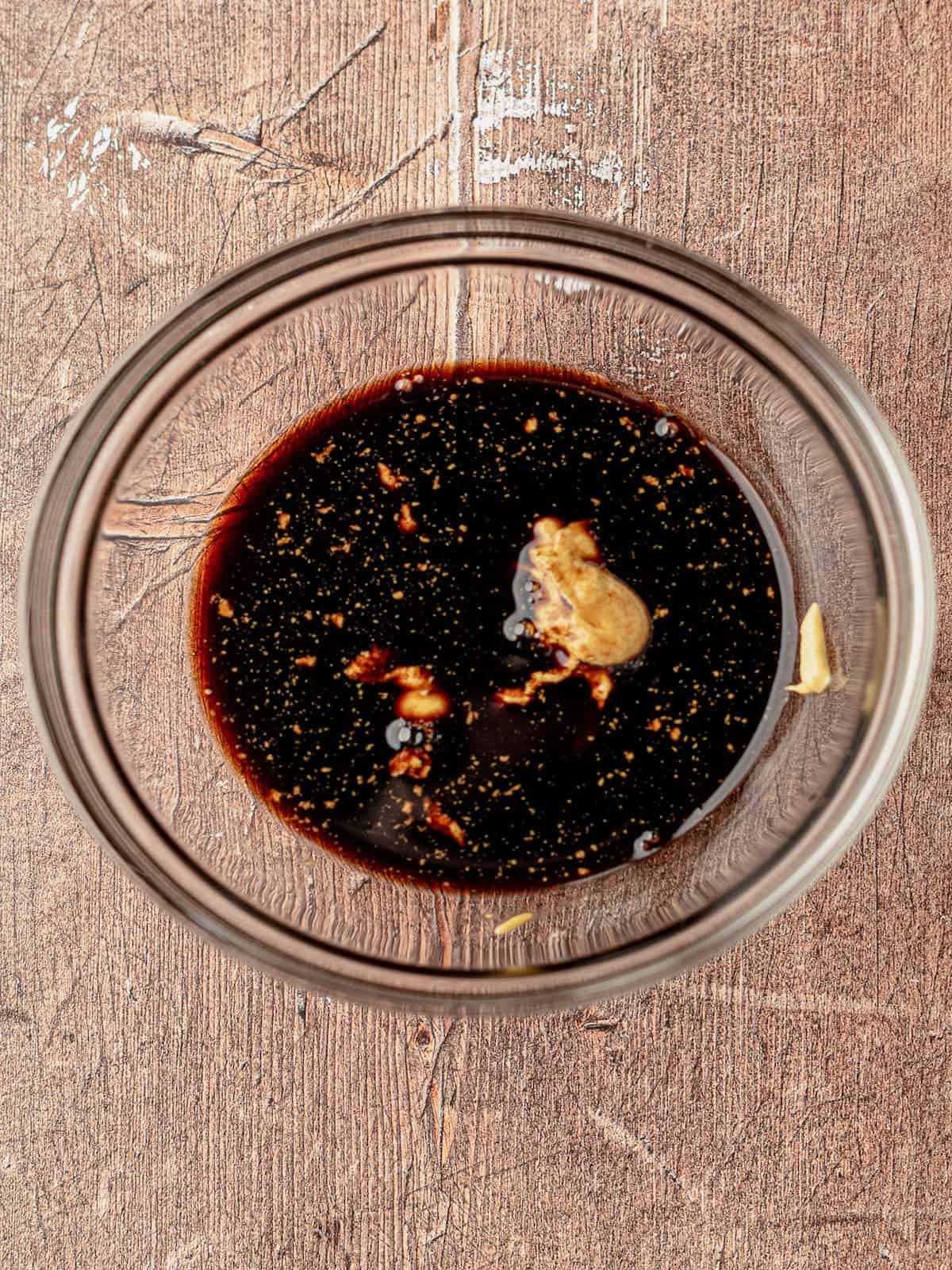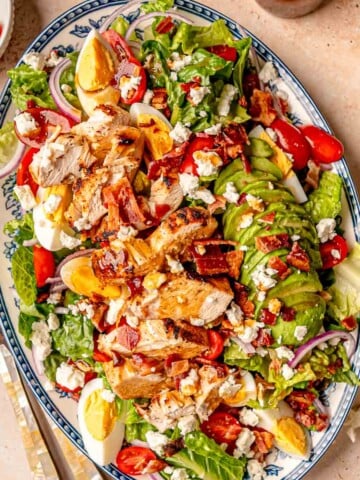This no-mayo potato salad is light, flavorful, and easy to make with just a few ingredients. It’s naturally vegan and gluten-free, making it a perfect summer side dish for everyone. Tossed in a tangy balsamic vinaigrette, this mayo-free twist is ideal for backyard barbecues, picnics, or weeknight dinners.

This mayo-free potato salad is fresh, flavorful, and perfect for summer. Made with red potatoes, a homemade vinaigrette, and fresh chives, it’s the best simple side dish. If you love no-mayo recipes, try my Potato and Green Bean Salad or this Warm Potato Salad with Vinaigrette for more options.
Jump to:
Key Ingredients

- Potatoes. I recommend baby red potatoes for this salad because you can leave the skin on. You can also use fingerling potatoes or small yellow potatoes.
- Balsamic vinegar. This salad is tossed in a balsamic vinaigrette, but you could use red wine vinegar if that's all you have on hand or my white balsamic vinaigrette.
- Dijon mustard. Helps emulsify the dressing and adds a bit of sharpness.
- Chives. They add a nice fresh punch to the dish. Swap with parsley, green onion, or dill.
See the recipe card below for the remaining ingredients and quantities.
How to Make Potato Salad Without Mayo

Step 1: Place potatoes in a large pot and cover with cold water. Add in some kosher salt. Bring the water to a boil. Reduce the heat and cook until potatoes are tender. Transfer them to a large bowl.

Step 2: Make the dressing by adding mustard and balsamic vinegar to a bowl or jar. Mix or shake until combined.

Step 3: Pour in the olive oil and season with salt and pepper. Mix until all ingredients are well combined.

Step 4: Pour the dressing over the potatoes and mix gently. Garnish with the chives and flakey salt, if desired.
Sarah's Top Tips
- Pick the right type of potatoes. For potato salad, you want to use small potatoes with thin skin, like red or yellow varieties.
- Cut the potatoes into quarters before boiling to help them hold their shape better when mixing the salad.
- Cook the potatoes just until they are fork-tender so they don't fall apart in the salad.

Serving
This no-mayo potato salad is super versatile and pairs well with almost any grilled or handheld main. I love serving it alongside something like my Grilled Mediterranean Chicken Thighs or Air Fryer Turkey Burgers, but it also holds its own next to richer dishes like Slow Cooker Pulled Pork Sliders or Stovetop Burgers. You can also customize it with extras like chopped pickles, fresh garlic, or crispy bacon to make it your own.
Storage
This potato salad will keep in the fridge for up to 3 days in an airtight container. I like to store my leftover dressing in the fridge for a few weeks. The olive oil will harden in the refrigerator; just allow it to come to room temperature for a few minutes before using.
Technically, you can freeze potato salad, but I don't recommend it. The ingredients' texture will change after thawing, resulting in a watery salad and mushy potatoes.
More Side Dishes
- Air Fryer Roasted Sweet Potatoes25 Minutes
- Grilled Peach Salad25 Minutes
- Maple Brussels Sprouts35 Minutes
- Lemon Orzo Salad with Feta30 Minutes
Did you make this recipe? Leave a ⭐️⭐️⭐️⭐️⭐️ rating and a comment below—I’d love to hear how it turned out! THANK YOU!
Recipe
Tap stars to rate!

Potato Salad without Mayo (No Eggs!)
See the full post for extra tips and photos
Ingredients
- 1 ½ pounds small baby potatoes, cut into quarters
- ½ tablespoon Kosher salt
- 1 tablespoon dijon mustard
- ¼ cup balsamic vinegar
- ¼ cup extra virgin olive oil
- ½ teaspoon salt
- ½ teaspoon black pepper
- 2 tablespoons fresh chives, chopped for garnish
Instructions
- Place potatoes in a large saucepan or Dutch oven and cover with water by 1 inch. Add in a ½ tablespoon of kosher salt. Turn the heat to high and bring the water to a boil. Reduce heat to medium and cook until potatoes are tender, about 15-20 minutes.1 ½ pounds small baby potatoes, ½ tablespoon Kosher salt
- Strain the potatoes and add them to a large mixing bowl.
- Make the dressing by adding dijon mustard and balsamic vinegar to a bowl or jar. Mix or shake until combined. Pour in the olive oil and season with salt and pepper. Mix until all ingredients are combined.1 tablespoon dijon mustard, ¼ cup balsamic vinegar, ¼ cup extra virgin olive oil, ½ teaspoon salt, ½ teaspoon black pepper
- Pour the dressing over the potatoes and mix gently with a large spoon to combine. You will use about ½ of the dressing, the remainder can be stored in the fridge for a few weeks.
- Sprinkle the potatoes with the chopped chives and flakey sea salt, if desired. Serve immediately or store in the fridge for up to 3 days.2 tablespoons fresh chives
Save this Recipe!
No spam ever. Just cozy, delicious recipes.
Sarah's Tips
- Use waxy potatoes like red, yellow, or fingerlings.
- Cut potatoes before boiling so they stay firm.
- Cook just until fork-tender to avoid mushiness.
- Store leftovers in the fridge and reserve extra dressing for later meals.










Comments
No Comments